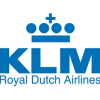The fuel flow is lbs/hour, the speed miles/hour and the passengers count in passengers (duh). If you want to have lbs/pax/1000 miles, you have to calculate fuel flow/pax count/speed and multiply by 1000.
Actually, it looks like the data in the game uses kg/hr for fuel flow.
For example, a 747-8 has a max range of 7472 miles with a full load. Divide that by the speed, 570 mph, and you get a number around 13 hours.
For fuel calculations, a 747-8 has a fuel capacity of 63,034 gallons. To convert that to pounds, jet fuel weighs about 62.5% as much as water (which weighs 8lbs/gal), meaning you will multiply the 63,034 gallons by 5 to get 315,170 lbs of fuel. If the fuel flow listed in the game (53,200) were in lbs/hour, then the maximum flight time would be around 6 hours, with a range of about 3,377 miles. Instead, I figure the fuel flow is in kg/hr, which would mean it is 2.2 times what the lbs/hr value is. So we divide the fuel flow (53,200) by 2.2 to get roughly 24,182 lbs/hr (note this is consistent with what pilots have said the fuel flow is, around 12 tons/hr). Now we divide the fuel weight by the actual lbs/hr value (315,170 / 24,182) and you get a number that comes out to about 13 hours, approximately matching the max range.
So the fuel efficiency of a 747-8 is going to be about 70.1 lbs/seat for every 1000 miles. Doing the same calculations with an Airbus A380 yields about 69.46 lbs/seat/1000mi.
Though I have noticed some inconsistency between the fuel range hours (max fuel / fuel flow) and the average speed hours (max range / avg speed) for different aircraft. This shouldn't affect the actual fuel efficiency calculations, though.

 Sign In
Sign In Create Account
Create Account







 Back to top
Back to top





















